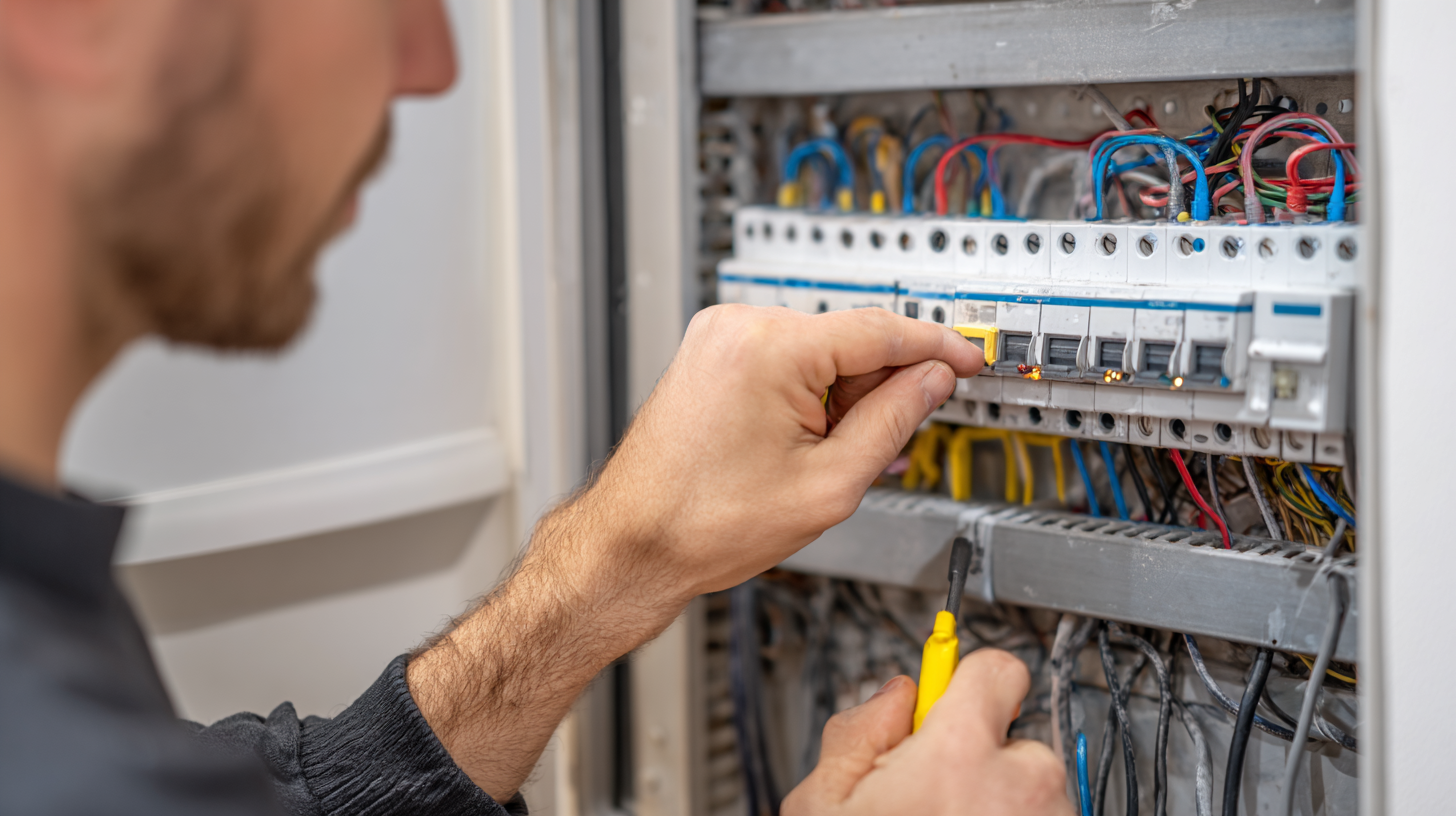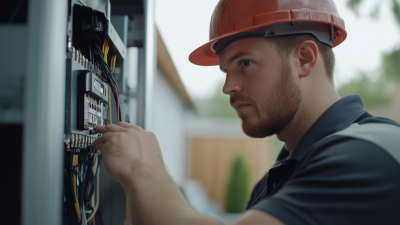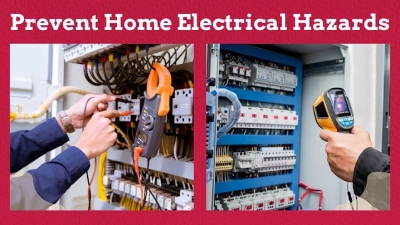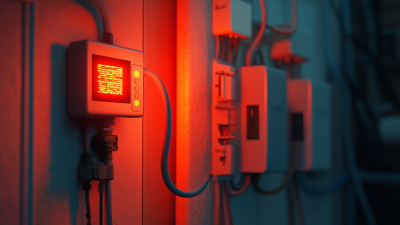- Home
- News
Essential Guide to House Electrical Safety Checks: Protect Your Home with These Key Statistics
In today's world, ensuring the safety of our homes is paramount, and one of the most critical aspects of home safety is conducting a thorough House Electrical Safety Check. With electrical fires being one of the leading causes of home-related emergencies, understanding the importance of regular safety assessments is essential. This guide will delve into key statistics and best practices that highlight how these checks can safeguard your family and property. By examining alarming data on electrical hazards and illustrating essential measures to mitigate risks, we aim to empower homeowners with the knowledge necessary to protect their living spaces. Join us as we explore the vital role of House Electrical Safety Checks in creating a secure and comfortable home environment.

Understanding the Importance of Electrical Safety Checks: Essential Statistics for Homeowners
Electrical safety checks are a crucial aspect of home maintenance that every homeowner should prioritize. According to statistics, around 51,000 home fires occur annually due to electrical malfunctions, leading to extensive property damage and even fatalities. Regular electrical inspections can significantly reduce these risks by identifying potential hazards before they escalate into serious issues. Homeowners should be aware that outdated wiring, overloaded circuits, and faulty outlets are common problems that can turn a seemingly safe home into a dangerous environment.
Furthermore, investing in regular safety checks not only protects lives but also enhances the longevity of electrical systems. Studies suggest that homes that undergo routine inspections experience fewer breakdowns and lower repair costs over time. For instance, a report showed that homes with modern electrical systems and routine checks can reduce maintenance expenses by up to 30%. By understanding the importance of these statistics, homeowners can take proactive measures to safeguard their properties and ensure a safe living environment for themselves and their families.
Common Electrical Hazards: Key Data Insights on Home Electrical Fires and Injuries
Electrical safety in homes is crucial, especially considering the alarming statistics surrounding electrical hazards. According to recent data, home electrical fires account for an estimated 51,000 incidents annually in the United States, resulting in nearly $1.3 billion in property damage. These fires are often caused by faulty wiring, overloaded circuits, and malfunctioning appliances. Awareness of these statistics is essential for homeowners, as it underscores the importance of regular electrical safety checks and maintenance.
In addition to fires, electrical injuries also pose a significant threat. The Electrical Safety Foundation International reports that approximately 30,000 non-fatal injuries related to electrical incidents occur each year. Common causes include contact with live wires or equipment malfunctions. Understanding these key data insights can motivate homeowners to implement safety measures, such as installing ground fault circuit interrupters (GFCIs) and regularly inspecting their electrical systems. By staying informed and proactive, individuals can protect their homes and loved ones from the risks associated with electrical hazards.
Frequency of Electrical Inspections: Statistics on How Often Homes Should Be Checked
When it comes to ensuring the electrical safety of our homes, understanding the frequency of inspections is critical. The National Fire Protection Association (NFPA) highlights that approximately 51,000 residential fires occur each year due to electrical failures. To mitigate these risks, the electrical safety standards suggest that homeowners conduct thorough inspections at least once every three to five years. This proactive approach can identify potential hazards and prevent catastrophic incidents.
Statistics from the Electrical Safety Foundation International (ESFI) reveal that homes with outdated wiring systems are at a significantly higher risk—up to 66% more likely to experience electrical fires. It is crucial for homeowners to be aware of the warning signs that may necessitate more frequent inspections, such as flickering lights, frequent tripped breakers, or unusual sounds from electrical outlets. Regular checks not only help in early detection of faults, but they also ensure compliance with local electrical codes, which may vary in frequency requirements. Engaging a qualified electrician for annual assessments is a worthwhile investment in preserving both safety and property value.
Essential Guide to House Electrical Safety Checks: Protect Your Home with These Key Statistics
| Frequency of Inspection | Recommended Timeframe | Percentage of Homes Inspected | Common Issues Found |
|---|---|---|---|
| Every Year | Annual Inspection | 30% | Wiring Issues |
| Every 5 Years | Routine Maintenance | 45% | Ground Faults |
| Every 10 Years | Long-term Assessment | 20% | Overloaded Circuits |
| After Major Renovations | Post-Construction Check | 15% | Poor Connections |
Expert Recommendations: Industry Standards and Guidelines for Electrical Safety Compliance
Ensuring electrical safety in residential buildings is paramount, particularly as standards evolve to accommodate modern technologies. Expert recommendations surrounding compliance with electrical safety guidelines are more critical than ever. For instance, as highlighted by John Bailey regarding California’s electrical code, adhering to current regulations not only ensures safety but also enhances property value. Compliance with these updated standards can help prevent incidents, aligning with a broader safety culture that is increasingly prioritized across industries.

To aid in maintaining electrical integrity, consider the following tips: First, conduct a thorough inspection of your home's wiring system every five years to identify any potential hazards. Secondly, ensure that all your electrical installations—especially for high-demand appliances—adhere to local codes and standards. According to the Bureau of Indian Standards, establishing proper electrical layouts is vital for reducing risk of electrical failures. Finally, staying informed about regulatory shifts and seeking guidance from certified experts can bolster your safety measures and assist in navigating the complexities of compliance.
As the property landscape changes, being proactive in electrical safety not only helps mitigate risks but also meets the evolving demands of regulatory requirements. Investing in knowledge and adherence to standards safeguards your home and enhances long-term safety.
The Financial Impact of Ignoring Electrical Safety: Cost Statistics of Electrical Repairs and Damages
Ignoring electrical safety in the home can have severe financial repercussions, as the statistics reveal the staggering costs associated with electrical repairs and damages. For instance, electrical malfunctions can lead to fires, which, according to the National Fire Protection Association, cause over $1 billion in property damage annually. This highlights the importance of regular electrical safety checks to identify potential hazards before they escalate into costly issues.

Furthermore, homeowners who neglect these checks often face higher repair bills in the long run. Surveys show that the average cost of repairing electrical damage can range from $200 to $2,000, depending on the severity of the problem. Additionally, if legal liabilities arise from safety violations, the financial burden can increase dramatically, leading to potential lawsuits and fines.
Investing in preventive measures and regular inspections can save homeowners not only money but also peace of mind, ensuring a safe living environment.
Related Posts
-

5 Essential Tips for Conducting an Electrical Installation Check
-

Essential Guide to Understanding the Importance of House Electrical Safety Checks for Global Buyers
-

Electrical Check Standards: Unveiling Global Compliance Challenges in Manufacturing
-

5 Essential Tips for Ensuring Electrical Safety Testing Success
-

How to Ensure Your Home's Electrical Safety with a Comprehensive Check
-

Ensuring Compliance and Safety with Electrical Safety Inspection in Global Supply Chains
